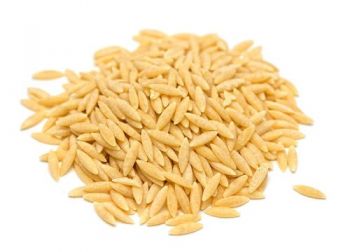Orzo: Difference between revisions
Jump to navigation
Jump to search
Amwelladmin (talk | contribs) No edit summary Tags: Mobile edit Mobile web edit |
Amwelladmin (talk | contribs) No edit summary |
||
| (5 intermediate revisions by the same user not shown) | |||
| Line 1: | Line 1: | ||
So that rice you get with kebabs in Turkish and | {{a|carbs|[[File:Orzo.jpg|350px|thumb|center|Some grainy stuff that is ''not'' [[rice]], yesterday]]}}So that [[rice]] you get with kebabs in Mediterranean cooking ([[orzo]] in Italian, [[κριθαράκι]] in Greek; [[arpa şehriye]] in Turkish and and [[لسان العصفور]] in Arabic) isn't rice at all, but is tiny bits of ''[[pasta]]''. Orzo’s fluid identity has lead to some controversy in the {{t|metaphor}} department, and of the incident and the [[Carbohydrate Olympics]], the less said the better. | ||
[[ | Interesting: the traditional Israeli [[פתיתים]], is similar, but not the same, being typically spheroid rather than grain-shaped. | ||
{{sa}} | |||
[https://www.bbcgoodfood.com/recipes/collection/orzo Some nice BBC recipes using orzo] | |||
{{egg}} | |||
Latest revision as of 12:33, 15 October 2019
|
Carbohydrates Anatomy™

|
So that rice you get with kebabs in Mediterranean cooking (orzo in Italian, κριθαράκι in Greek; arpa şehriye in Turkish and and لسان العصفور in Arabic) isn't rice at all, but is tiny bits of pasta. Orzo’s fluid identity has lead to some controversy in the metaphor department, and of the incident and the Carbohydrate Olympics, the less said the better.
Interesting: the traditional Israeli פתיתים, is similar, but not the same, being typically spheroid rather than grain-shaped.